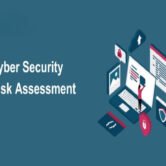
What documentation is necessary for efficient application maintenance?
System Architecture Documentation
- Describes the overall structure of the application, including components and data flows.
- Maps out server, database, middleware, and integration points.
- Details relationships between microservices or modular elements.
- Includes diagrams for deployment environments and scaling configurations.
- Helps maintenance teams understand how changes affect interconnected parts.
Codebase and Technical Specifications
- Includes inline comments, function definitions, and module responsibilities.
- Provides version history and changelogs for major updates and patches.
- Lists external dependencies, libraries, and configurations.
- Documents setup instructions and build processes.
- Aids in debugging, refactoring, and onboarding new developers.
Configuration and Environment Settings
- Lists variables and parameters used across development, testing, and production.
- Includes secrets management policies and access controls.
- Documents infrastructure-as-code definitions and automation scripts.
- Identifies environment-specific differences that may affect behavior.
- Ensures consistency when replicating or restoring environments.
Maintenance Procedures and SOPs
- Outlines steps for routine tasks such as backups, patching, and health checks.
- Defines escalation paths for handling outages or critical failures.
- Provides incident response protocols and rollback procedures.
- Includes schedules for preventive maintenance and monitoring reviews.
- Supports operational continuity during team transitions or crises.
Issue Tracking and Resolution Logs
- Records bugs, fixes, and related tickets with timestamps and outcomes.
- Maintains a list of known issues and pending patches.
- Captures recurring incidents and mitigation strategies.
- Helps prioritize future maintenance efforts through historical patterns.
- Enables transparency and accountability in maintenance workflows.





